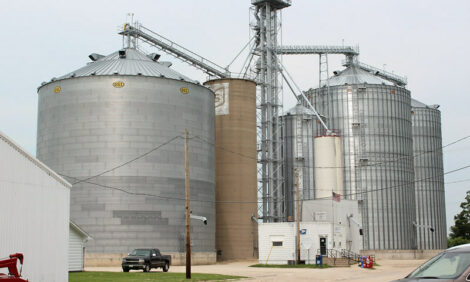



Forage is Key to Calf Price Outlook
US - As of the end of July, USDA-NASS reported 57 per cent of the US pasture and range as poor or very poor (the two worst categories and essentially requiring significant supplemental feed or worse). At the same time last year, the massive Southern Plains centered drought resulted in a national poor and very poor rating of about 35 per cent. Widespread deterioration in crop and pasture conditions made 2012 the worst US drought since 1988, writes James Robb, Director of the Livestock Marketing Information Centre.With the 2012 drought, national average corn yield estimates have been reduced almost weekly. Recent industry estimates had corn yielding 20 per cent below a year ago and heading lower. So, as the second quarter of the year progressed drought turned from eroding to hammering calf prices. On a monthly average basis the 500-to 600-pound steer calf price in the Southern Plains crumbled from about $182.00 per cwt. in May to about $145.50 in July. By the end of July, year-on-year gains in calf and yearling prices had disappeared.
,br>
The rate of decline in calf and yearling prices has recently moderated and a few markets reported slight upticks last week. The fundamental sign-posts that the decline in calf prices has ended will be forage related.
Of course, the answer this year depends on Mother Nature. Three areas to watch over the near-term are: 1) the amount of drought damaged corn harvested for forage (green chop, silage, baled); 2) development of Southern Plains wheat and small grains pastures (moisture availability, planting progress and temperatures); and 3) prospects for fall/winter forages in winter grazing areas, like parts of California.
Regionally and even nationally it is possible for lightweight calf prices to bottom quickly if the forage situation improves. But an actual rebound in calf prices could take a while. High cost-of-gains will make cattle feeders more interested in yearlings than freshly weaned animals.
On a per cwt. basis, this fall Southern Plains calves could bring a very small premium compared to yearlings. In 2012’s fourth quarter, 500-to 600-pound steers are currently forecast by the LMIC to average five per cent to seven per cent below a year ago. In the Southern Plains that means average quality steer calf prices (500- to 600-pound) in the $140’s per cwt. For the year, calf prices are projected to average 9% to 10 per cent over 2011’s.
Looking ahead to calendar year 2013, calf and yearling price patterns could unfold quite differently than this year’s. If more normal weather occurs in 2013, prices of calves and yearlings are expected to be highest in the second half of the year.
For the first two quarters of 2013, calf and yearling prices are forecast to be below 2012’s. With increasingly tight cattle supplies, normal weather the second half of the year could bring prices above 2012’s. In fact, calf prices in the fall quarter of the year are expected to be well above 2012’s and could easily eclipse 2011’s record high.
TheCattleSite News Desk


